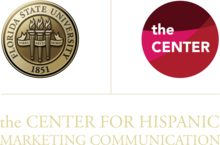No One Left Behind
April 30, 2019
 By Quenitra Knight, – Multicultural Marketing Communication Certificate, Student
By Quenitra Knight, – Multicultural Marketing Communication Certificate, Student
The world is filled with people that are of different nationalities, religions, ethnicities, races, languages, sexual orientations, cultures etc. In America, a lot of those differences that embodies a person are what makes the U.S. different from other countries as more people are breaking free to be their authentic self in a multicultural society. Over the years, America was often referred to as a melting pot, but now viewed more of salad bowl to describe a united nation of peoples who bump into each other and share the same space but doesn’t overly blend together (Morse, 2009). As the U.S. becomes a larger multicultural society, what was once normal in advertising and marketing to a dominated heterosexual white demographic from the past, will now have to evolve or die in the multicultural society that America is becoming. In the new world of advertising and marketing, multicultural exclusivity is no longer an option because inclusivity is necessary in society.
As an African American minority, I find it refreshing to see the little changes in marketing for the evolving multicultural society. The commercials on television include people of different sexual orientations, races, ethnicities and more. In the past, there was always one minority at a time being used in advertising and typically it was a black person who stood to be the token spokesperson for all minorities. Currently, there are representation of all kinds of people in advertising and marketing. However, there still is a lot of work that needs to be done in order to reach the growth that is necessary to say that marketing in America represents the multicultural society. According to Esther Franklin, only 3 percent of the $75 billion spent on television, radio, internet, and magazine advertisements focused on Black audiences in 2012 was allocated to African-American targeted media platforms.
In society, African Americans/ Black people have a lot of buying power to the point that when something is offensive to the black community, brands immediately try to rectify the issue. For example, H&M had backlash in 2018 from their advertising a dark skin black boy wearing a sweater stating “coolest monkey in the jungle” on the front. The outrages from the black community lead to the clothing company to apologize about the incident. In America, racism runs deep with African Americans/Black people as many know the pain of being called a monkey as derogatory name.
Similarly, like African Americans/ Black people, other minorities have enough pull if not more to make marketers listen to them such as the LBGTQ community. The 2019 Academy Awards (Oscars) host Kevin Hart’s old homophobic tweets resurfaced and the Oscars wanted him to apologize because they know how much the backlash can hurt the network and the show. Although he did not initially apologize, Hart came around after he turned down the hosting gig when the outraged started. In marketing, people are starting to realize that minorities are collectively the majority and ignoring them can be detrimental to their brand and products in America. As a country, America’s multicultural society is expanding as more immigrants make their way and call the U.S. home. The combined legal immigration from Latin America and Asia is just over 62% and that suggests important changes in the configuration of the cultural landscape of the US (Korzenny, Chapa, & Korzenny, 2017). When marketing in the U.S transitions completely into representing a multicultural society then America will leave no one behind and make everyone feel included like the efforts in the Hispanic community.
Due to the high Hispanic and Latino population in America, many people can notice the efforts that marketers are putting to include a fast-growing demographic that is heading to be the majority in the future. According to Barbara Mueller, television and radio spots featured Fisher-Price’s Peek-a Blocks toys and LittlePeople play set where the tagline was translated in Spanish with music that had a Latin flair. When marketing to a community that is heavenly involved with family and traditions such as the Hispanic community, it was the step in the right direction for not only the multicultural community, but a distinctive fast-growing demographic. In 2013, Hispanic-Americans represented 17 percent of the total U.S. population and an enormous 25 percent of the country’s millennials (Precourt, 2014). Now, the population is more and will continue to grow over the next 50 years if the past reflects what is to come for the Hispanic and Latino population.
Overall, as a minority, I think the way advertising and marketing is done in the evolving multicultural society in America is making strides in the right direction. However, advertising and marketing needs improvement especially with the African American/ Black community. When marketing to a multicultural society, marketers must remember that multicultural differences have a deeper effect on advertising beyond just the languages of the messages (Precourt, 2014). Therefore, to make sure no one is left behind in advertising and marketing then all aspects needs to be accounted because marketing is cultural and you can’t have a multicultural society without culture.
References
- Franklin, E. (E. T. . (2014). Are You Reaching The Black-American Consumer? Journal of Advertising Research, 54(3), 259–262. https://doi-org.proxy.lib.fsu.edu/10.2501/JAR-54-3-259-262
- Korzenny, F., Chapa, S. & Korzenny, B. (2017). Hispanic marketing : the power of the new Latino consumer. Abingdon, Oxon New York, NY: Routledge.
- Morse, D. (2009). Multicultural intelligence : eight make-or-break rules for marketing to race, ethnicity, and sexual orientation. Ithaca, NY: Paramount Market Publishing.
- Mueller, B. (2008). Communicating with the multicultural consumer : theoretical and practical perspectives. New York: Peter Lang.
- Precourt, G. (2014). What Do We Know About Multicultural Marketing? Journal of Advertising Research, 54(3), 252–253. https://doi-org.proxy.lib.fsu.edu/10.2501/JAR-54-3-252-253































